Minute-by-Minute: What Your Body Experiences During an Accident
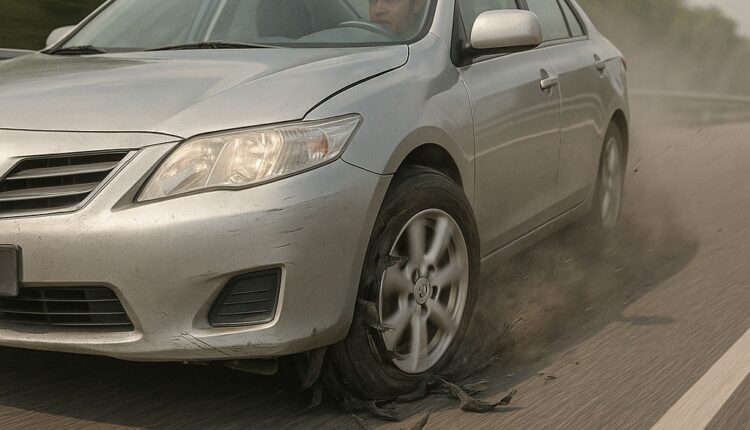 Suddenly, out of nowhere, the car’s tyre burst and you hear a loud popping sound. Your heart jumps, and in a matter of seconds, the car instantly jolts sideways. Before you have time to understand what’s happening, your vehicle crashes hard into the concrete barrier and gets rolled over. In just seconds, your peaceful drive turns into chaos, and you’re feeling shocked, confused, and overwhelmed.
Suddenly, out of nowhere, the car’s tyre burst and you hear a loud popping sound. Your heart jumps, and in a matter of seconds, the car instantly jolts sideways. Before you have time to understand what’s happening, your vehicle crashes hard into the concrete barrier and gets rolled over. In just seconds, your peaceful drive turns into chaos, and you’re feeling shocked, confused, and overwhelmed.
Here’s a minute-by-minute story of what happens next, along with simple and important safety tips to help you prevent and manage accidents like this one:
Immediate Psychological Reaction (Minute 1-2)
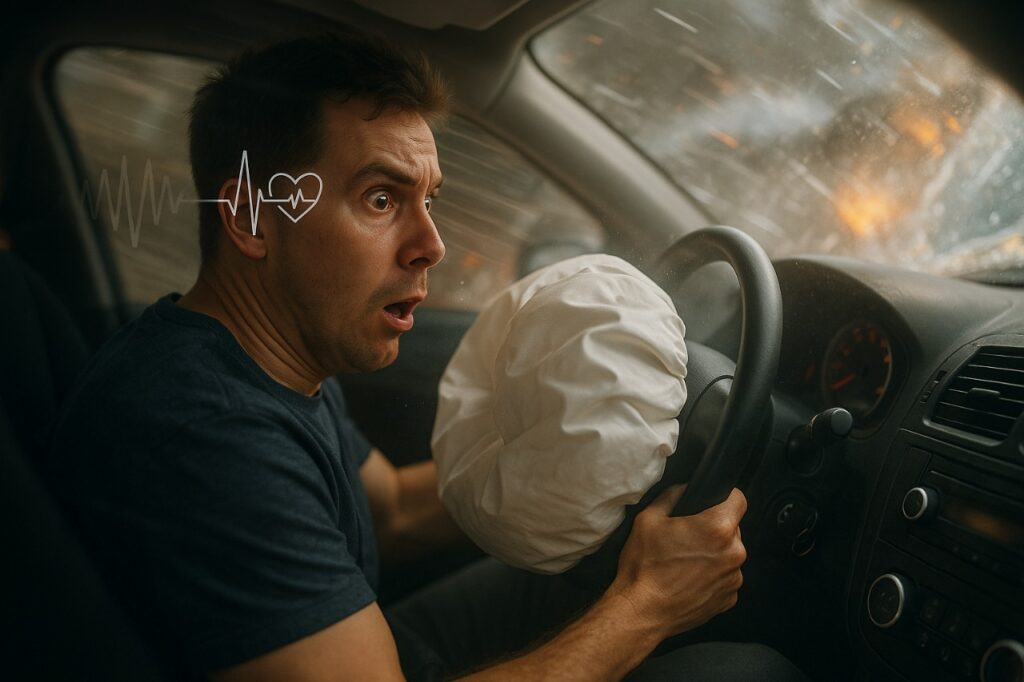 As soon as your car hits the barrier, your ears fill with the loud crash and crunching metal. Broken glass flies inward, and airbags explode, releasing smoke and a strong chemical smell. Your brain quickly senses danger, putting your body into survival mode, and immediately releases a rush of adrenaline. This chemical quickly boosts blood flow and sugar levels to the brain and muscles, increases alertness, raises blood pressure, and provides instant energy to handle danger.
As soon as your car hits the barrier, your ears fill with the loud crash and crunching metal. Broken glass flies inward, and airbags explode, releasing smoke and a strong chemical smell. Your brain quickly senses danger, putting your body into survival mode, and immediately releases a rush of adrenaline. This chemical quickly boosts blood flow and sugar levels to the brain and muscles, increases alertness, raises blood pressure, and provides instant energy to handle danger.
Your brain’s thinking ability narrows to focus only on immediate safety because, in those moments, the brain prioritizes immediate safety over creating lasting memories. You might notice your hearing becoming dull and your vision narrowing, as your brain tries to avoid feeling overwhelmed.
Assessing Injuries and Staying Calm (Minutes 3-5)
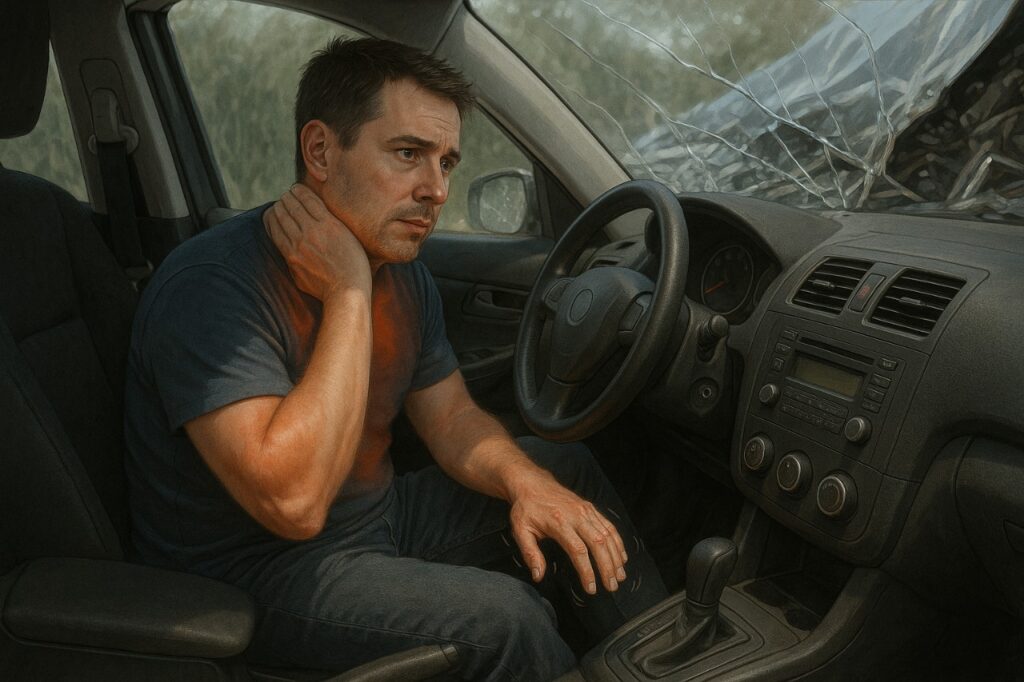 As your car finally comes to a stop, in the third minute, your hands and legs begin to shake continuously. This happens because adrenaline causes your heart rate and breathing to increase, which in turn causes your muscles to shake. At this moment, your body will also release natural pain-relieving chemicals to block pain temporarily.
As your car finally comes to a stop, in the third minute, your hands and legs begin to shake continuously. This happens because adrenaline causes your heart rate and breathing to increase, which in turn causes your muscles to shake. At this moment, your body will also release natural pain-relieving chemicals to block pain temporarily.
By minutes four and five after the crash, the initial numbness fades. You might experience soreness in your chest, shoulders, or neck due to the sudden impact of the seatbelt or airbag.
Immediately switch off your car engine and turn on the hazard lights to alert others. Unless your car is on fire or in immediate danger, it’s safest to remain inside, secured by your seatbelt. Rapid movements or unnecessary exits from your vehicle can worsen injuries or create new dangers.
Calling for Rescue (Minutes 6-12)
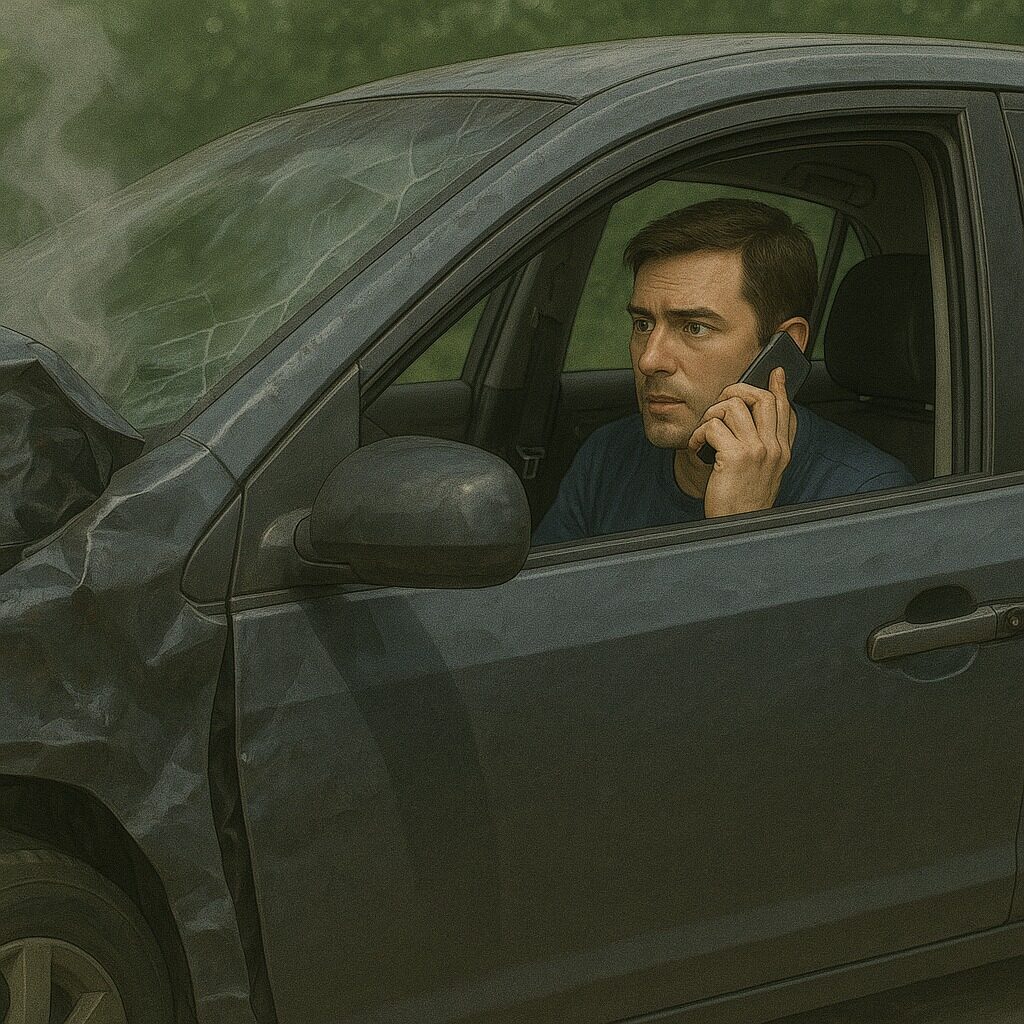 By minute six, vision and audio sensory returns to normal, allowing you to think more clearly. You can now reach your phone and call the Motorway helpline 130 or Rescue 1122. While speaking with responders, remain calm and provide details about the accident, your exact location, and any personal injuries.
By minute six, vision and audio sensory returns to normal, allowing you to think more clearly. You can now reach your phone and call the Motorway helpline 130 or Rescue 1122. While speaking with responders, remain calm and provide details about the accident, your exact location, and any personal injuries.
Preparing for Rescue (Minutes 13-20)
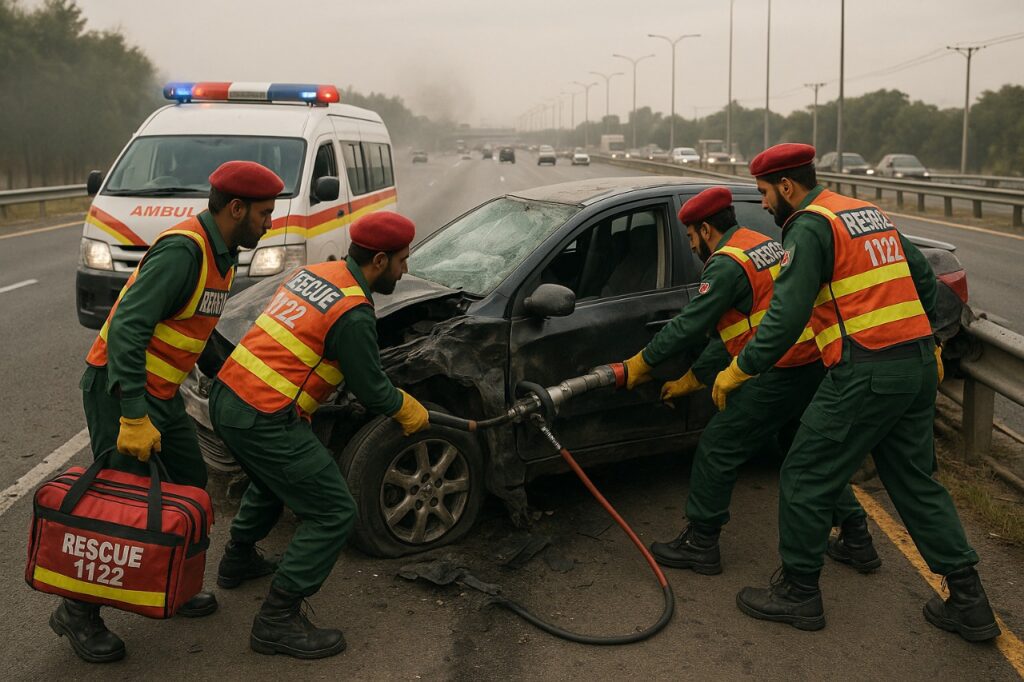 Waiting for an ambulance can feel like the longest and most stressful wait of your life. As your adrenaline begins to fade, your body gradually calms down, but this also means you’ll start feeling the pain from injuries.
Waiting for an ambulance can feel like the longest and most stressful wait of your life. As your adrenaline begins to fade, your body gradually calms down, but this also means you’ll start feeling the pain from injuries.
Focus on slow, steady breathing to manage anxiety and pain. As sirens become audible, unlock your doors, wave visibly, or briefly honk the horn if trapped, allowing responders to find you quickly. Emergency personnel’s arrival brings relief; remain calm, answer questions honestly, and follow their guidance for immediate medical care.
Important Dos and Don’ts in Your Vehicle
After experiencing such a stressful and dangerous situation, you may now realise the importance of preventive measures. To ensure safety and avoid future accidents, keep in mind these essential tips:
Dos:
- Always wear your seatbelt, even on short journeys. Seatbelts save lives during crashes. Airbags and seatbelts are designed to work together. If you aren’t wearing your seatbelt, airbags alone can cause severe injuries due to the force of deployment.
- Keep Rescue 1122 and Motorway helpline 130 on speed dial for quick access in emergencies.
- Regularly maintain your vehicle, especially brakes, tyres, and lights, for safe driving.
- Maintain a safe distance from vehicles ahead—avoid bumper-to-bumper driving. If the car in front brakes suddenly, you’ll have enough space and time to respond safely. Keep at least a three-meter gap.
- Follow motorway speed limits strictly; exceeding them is not only dangerous but can also result in an FIR being registered against you.
Don’ts:
- Don’t drive when overly tired or fatigued. When you’re very tired or sleepy, your brain and body slow down, making you react more slowly to unexpected situations. This can lead to losing control of your vehicle or failing to stop in time to avoid a crash.
- Avoid doing drag racing on the motorway or ring road; some do it, it doesn’t achieve you anything in life, but you risk your life, car and other lives just for the sake of adrenaline and thrill.
- Never overload your vehicle beyond its recommended capacity, as it compromises handling, braking, and tyre safety.


